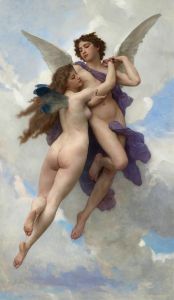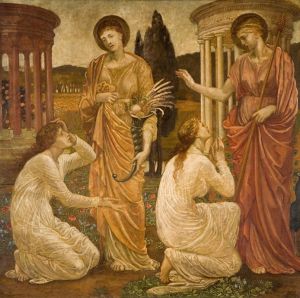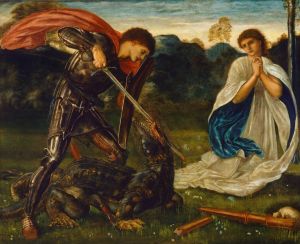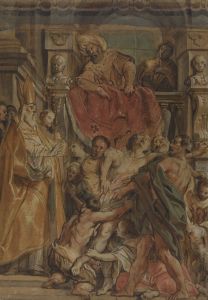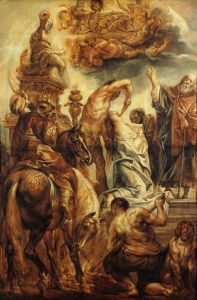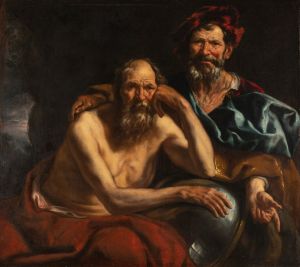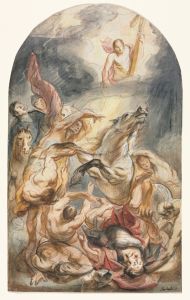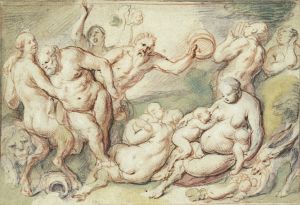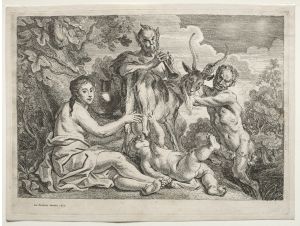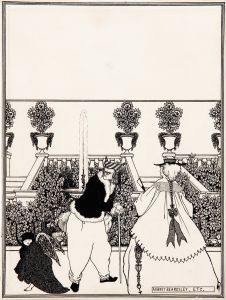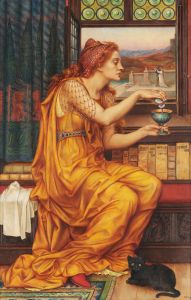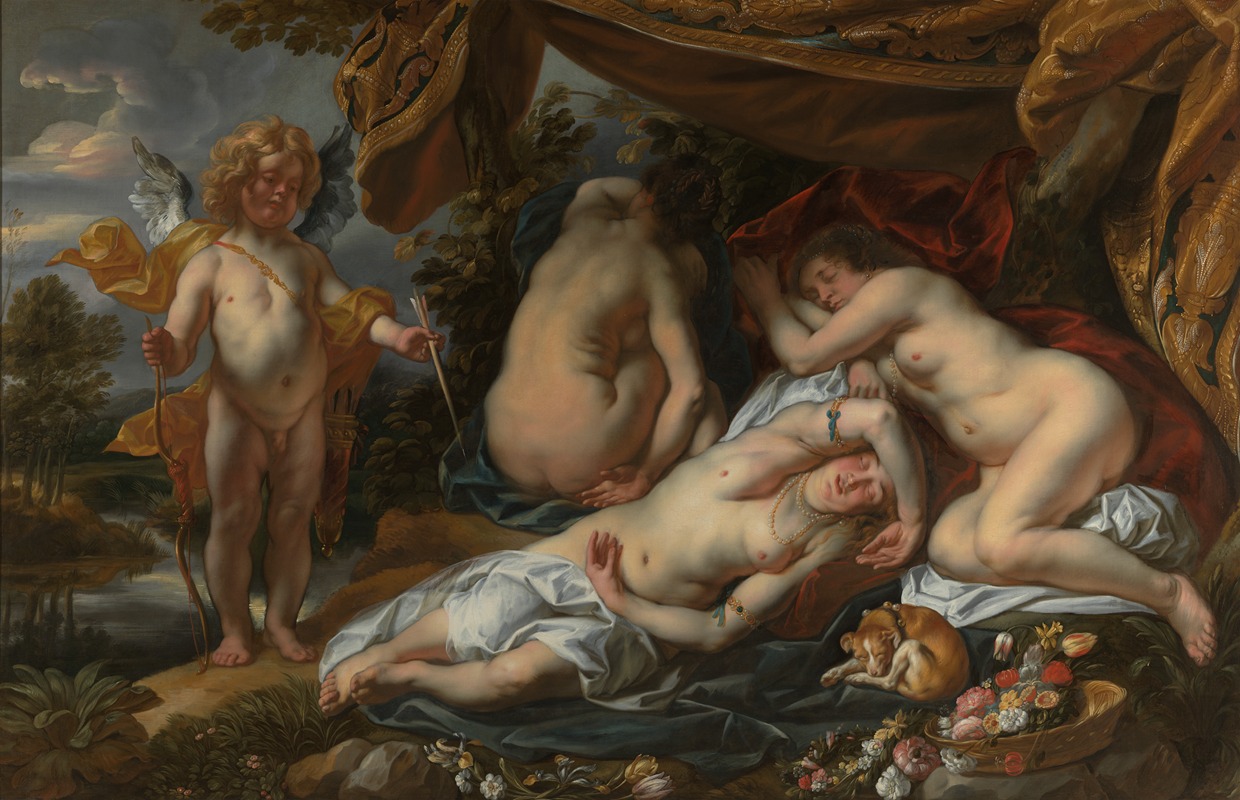
Cupid and Psyche
A hand-painted replica of Jacob Jordaens’s masterpiece Cupid and Psyche, meticulously crafted by professional artists to capture the true essence of the original. Each piece is created with museum-quality canvas and rare mineral pigments, carefully painted by experienced artists with delicate brushstrokes and rich, layered colors to perfectly recreate the texture of the original artwork. Unlike machine-printed reproductions, this hand-painted version brings the painting to life, infused with the artist’s emotions and skill in every stroke. Whether for personal collection or home decoration, it instantly elevates the artistic atmosphere of any space.
Jacob Jordaens, a prominent Flemish Baroque painter, created the artwork "Cupid and Psyche." This painting is an exquisite representation of a popular mythological theme, which has been a source of inspiration for many artists throughout history. Jordaens, born in 1593 in Antwerp, was a contemporary of Peter Paul Rubens and Anthony van Dyck, and he is known for his vibrant use of color and dynamic compositions.
The myth of Cupid and Psyche originates from "The Golden Ass," a Latin novel written by Apuleius in the 2nd century AD. The story revolves around Psyche, a mortal woman of extraordinary beauty, and Cupid, the god of love. Despite the jealousy of Venus, Cupid's mother, the two fall deeply in love. The tale is rich with themes of love, betrayal, and redemption, culminating in Psyche's eventual deification and eternal union with Cupid.
In Jordaens' depiction, the artist captures a moment of tender intimacy between the two lovers. Cupid, often portrayed with wings and a bow, is shown embracing Psyche, who is typically depicted as a beautiful young woman. The composition of the painting emphasizes the emotional connection between the characters, with their expressions and gestures conveying a sense of affection and vulnerability.
Jordaens' use of light and shadow enhances the dramatic effect of the scene. The soft illumination on the figures contrasts with the darker background, drawing the viewer's attention to the central subjects. This technique is characteristic of the Baroque style, which often employed chiaroscuro to create a sense of depth and volume.
The painting also reflects Jordaens' skill in rendering textures and details. The delicate folds of Psyche's drapery, the feathers of Cupid's wings, and the subtle variations in skin tones all demonstrate the artist's meticulous attention to detail. These elements contribute to the overall realism and sensuality of the work.
Jordaens' "Cupid and Psyche" is not only a testament to his artistic prowess but also a reflection of the cultural and intellectual currents of his time. The Baroque period was marked by a renewed interest in classical mythology and literature, and artists like Jordaens sought to explore these themes through their work. By depicting mythological subjects, they were able to engage with timeless human experiences and emotions, making their art both relevant and enduring.
The painting is housed in the Royal Museum of Fine Arts in Antwerp, where it continues to be admired by visitors from around the world. It remains an important example of Jordaens' contribution to the Baroque movement and his ability to convey complex narratives through his art.
In summary, Jacob Jordaens' "Cupid and Psyche" is a masterful interpretation of a classic mythological story. Through his expert use of composition, light, and detail, Jordaens brings to life the enduring tale of love and transformation, showcasing his talent and the rich artistic heritage of the Baroque era.





